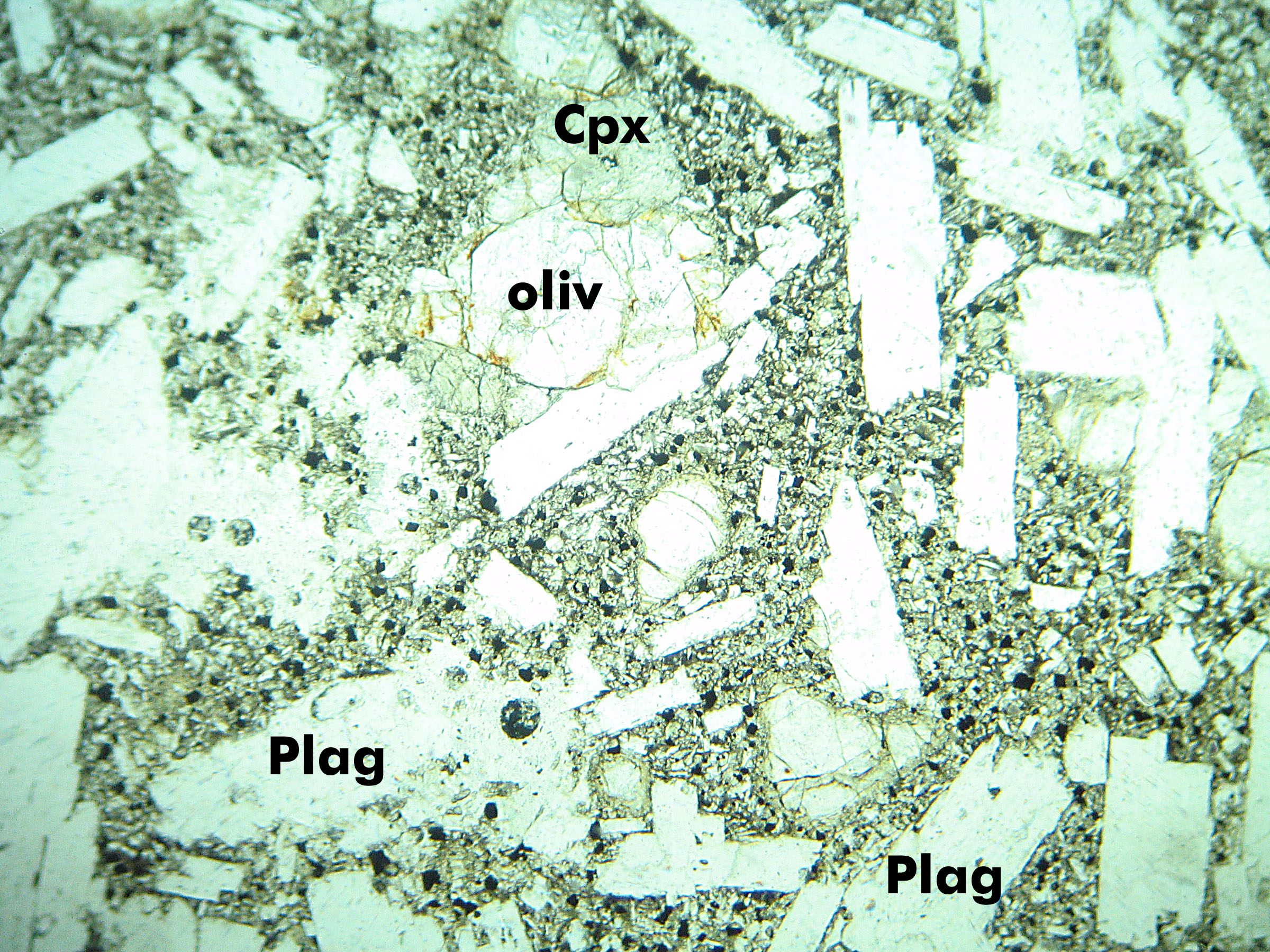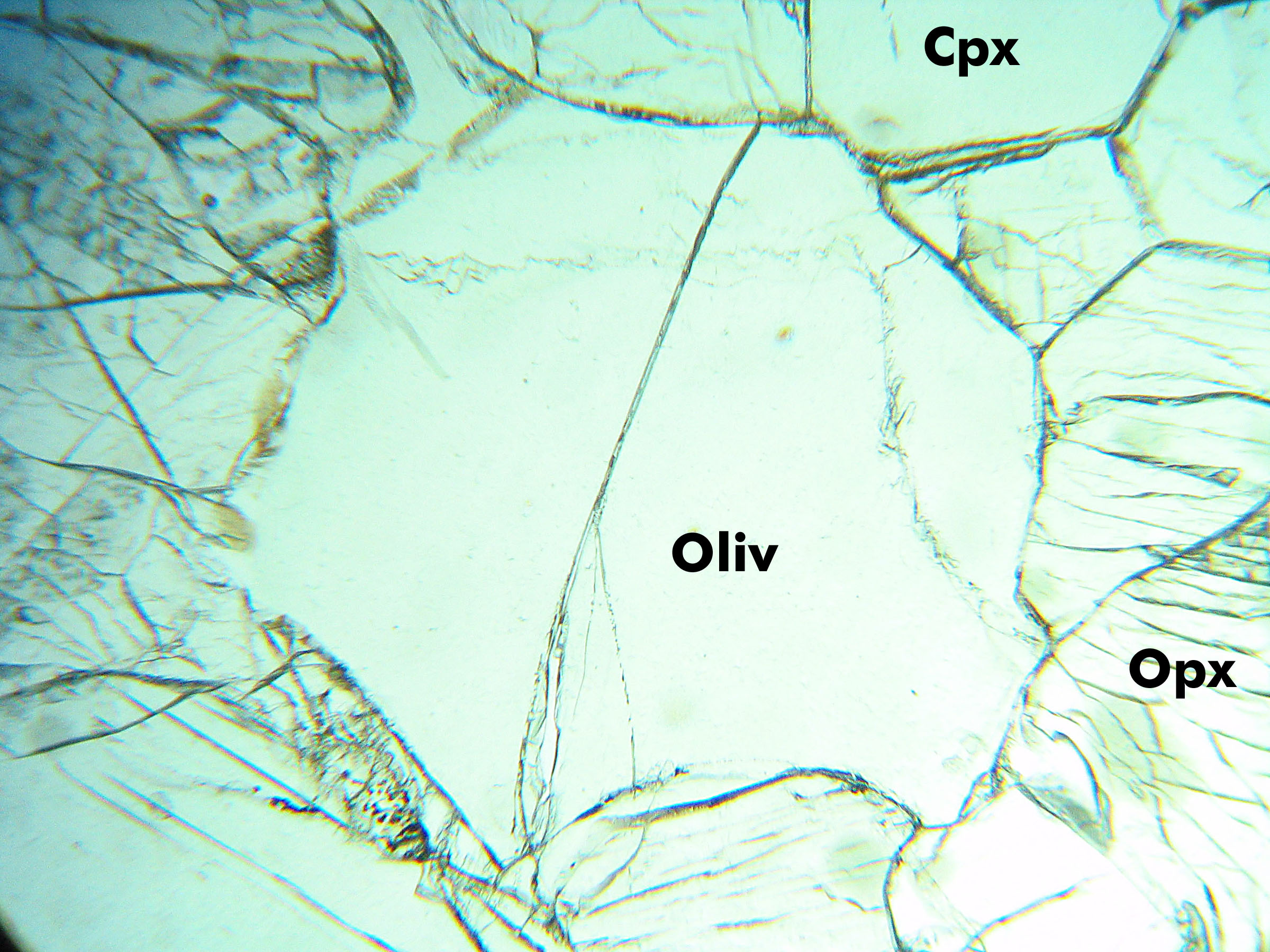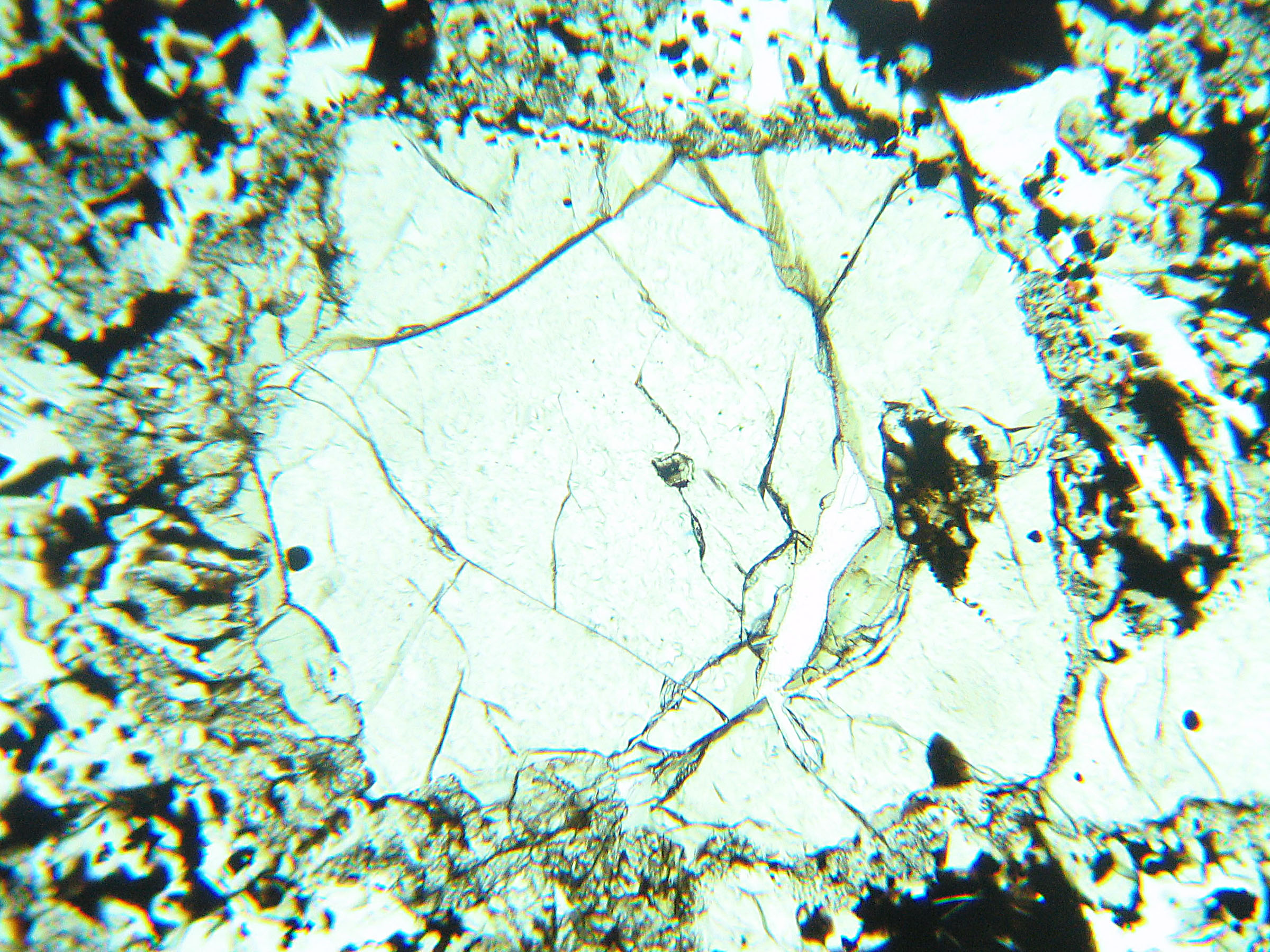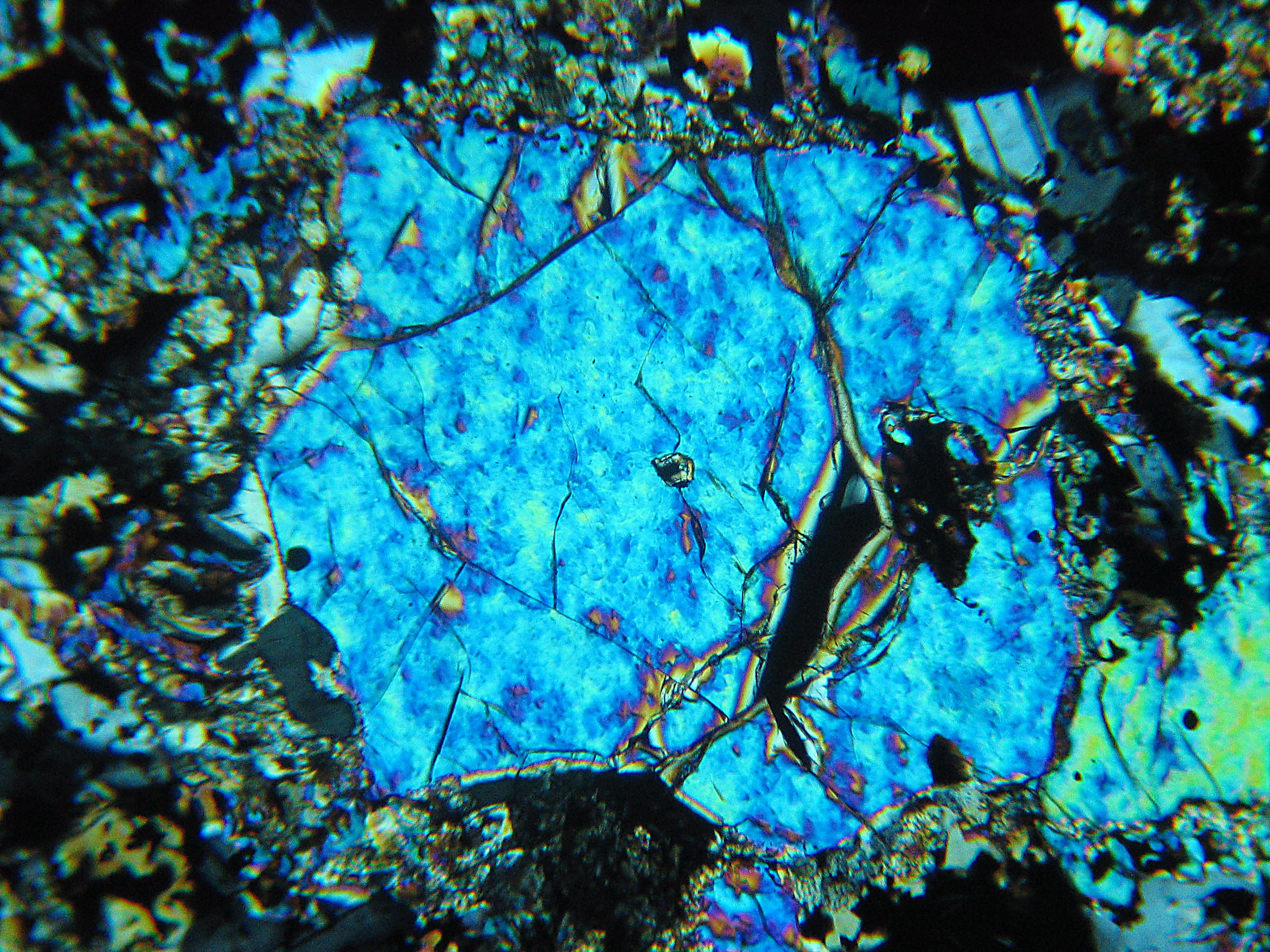|
Olivine, Augite, and Plagioclase
in a Porphyry from Near Fish Lake, Oregon
 
This view shows three kinds of phenocrysts
in a groundmass of mostly plagioclase,
magnetite (opaque) and clinopyroxene
(augite). The phenocrysts are lathes of plagioclase,
several more equant grains of olivine, and two grains of augite. In PP light all three are nearly clear,
but the augite (hard to pick out in PP)
has a slightly greenish tint.
In XP light, the olivine can be seen to
have 2nd order pastel interference
colors that vary within individual grains. The largest olivine
grain, a quarter of the way down from the top center of the photo)
shows red, violet, blue and green interference
colors. The two largest augite grains
are next to it - one up and to the right and one below and slightly
left. Both augite grains show somewhat
anomalous yelllow-brown interference
colors.
The field of view is about 2.5 mm across.
|






